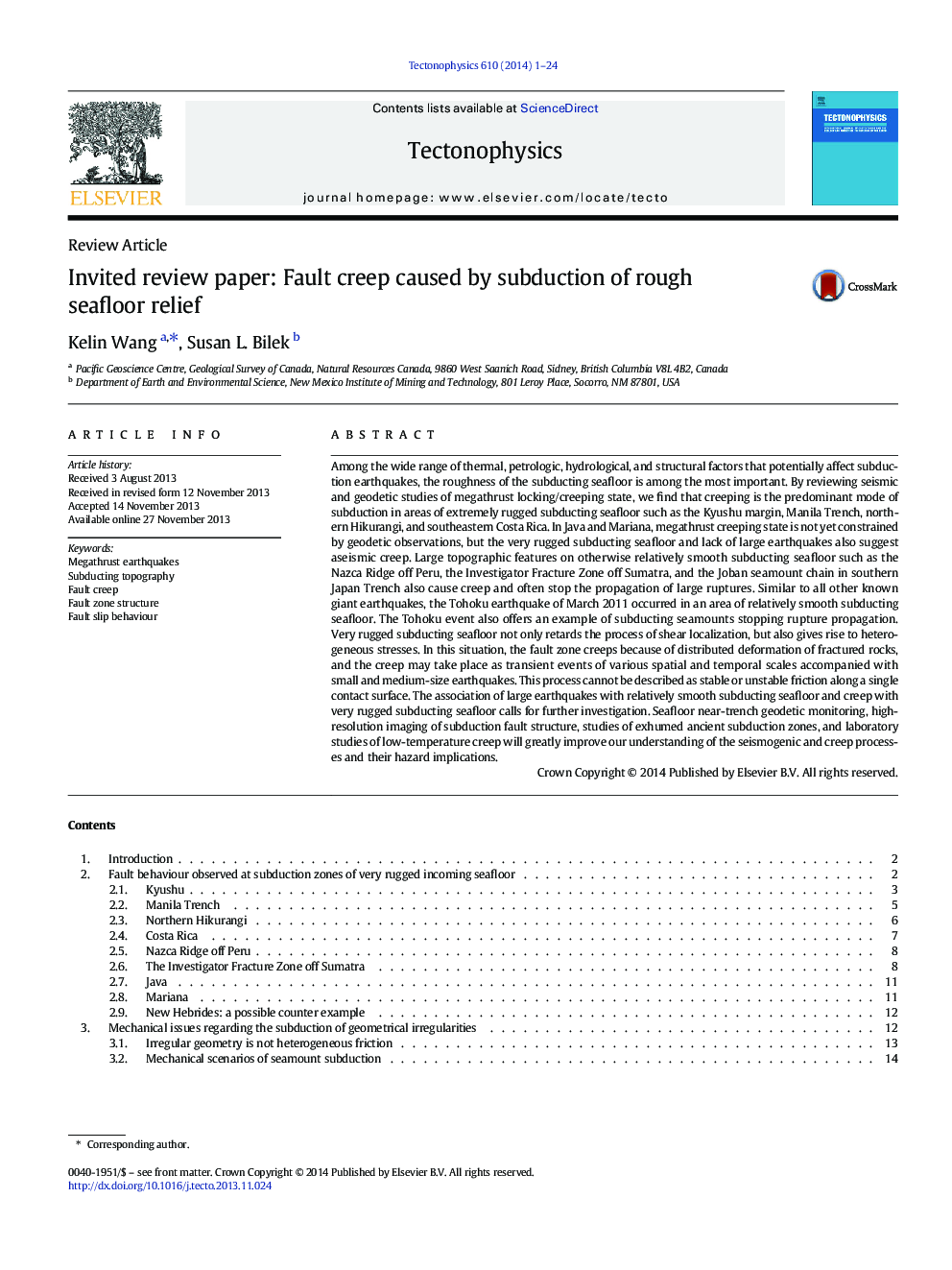| کد مقاله | کد نشریه | سال انتشار | مقاله انگلیسی | نسخه تمام متن |
|---|---|---|---|---|
| 4692054 | 1636777 | 2014 | 24 صفحه PDF | دانلود رایگان |
Among the wide range of thermal, petrologic, hydrological, and structural factors that potentially affect subduction earthquakes, the roughness of the subducting seafloor is among the most important. By reviewing seismic and geodetic studies of megathrust locking/creeping state, we find that creeping is the predominant mode of subduction in areas of extremely rugged subducting seafloor such as the Kyushu margin, Manila Trench, northern Hikurangi, and southeastern Costa Rica. In Java and Mariana, megathrust creeping state is not yet constrained by geodetic observations, but the very rugged subducting seafloor and lack of large earthquakes also suggest aseismic creep. Large topographic features on otherwise relatively smooth subducting seafloor such as the Nazca Ridge off Peru, the Investigator Fracture Zone off Sumatra, and the Joban seamount chain in southern Japan Trench also cause creep and often stop the propagation of large ruptures. Similar to all other known giant earthquakes, the Tohoku earthquake of March 2011 occurred in an area of relatively smooth subducting seafloor. The Tohoku event also offers an example of subducting seamounts stopping rupture propagation. Very rugged subducting seafloor not only retards the process of shear localization, but also gives rise to heterogeneous stresses. In this situation, the fault zone creeps because of distributed deformation of fractured rocks, and the creep may take place as transient events of various spatial and temporal scales accompanied with small and medium-size earthquakes. This process cannot be described as stable or unstable friction along a single contact surface. The association of large earthquakes with relatively smooth subducting seafloor and creep with very rugged subducting seafloor calls for further investigation. Seafloor near-trench geodetic monitoring, high-resolution imaging of subduction fault structure, studies of exhumed ancient subduction zones, and laboratory studies of low-temperature creep will greatly improve our understanding of the seismogenic and creep processes and their hazard implications.
Journal: Tectonophysics - Volume 610, 6 January 2014, Pages 1–24
